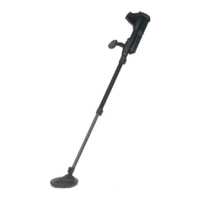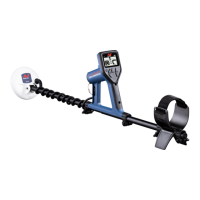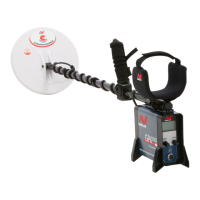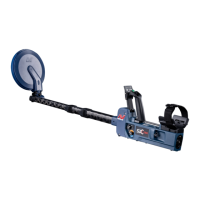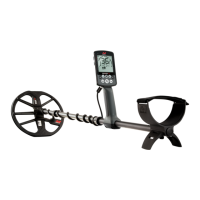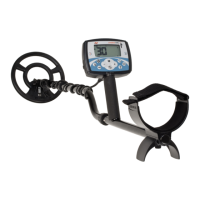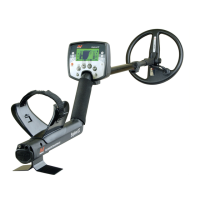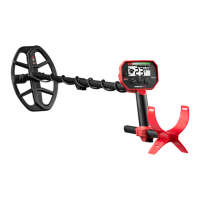Do you have a question about the Minelab Manticore and is the answer not in the manual?
| Technology | Multi-IQ+ |
|---|---|
| Target ID | 0-99 |
| Coil | 11" Double-D |
| Target Identification | Yes |
| Wireless Connectivity | Bluetooth |
| Coil Size | 11 inches |
| Weight | 1.3 kg |
| Waterproof | Yes, up to 5 meters |
| Search Modes | All Terrain, Beach, Goldfield |
| Display | LCD |
| Type | VLF |
| Frequency | Multi-frequency |
| Ground Balance | Auto and Manual |
| Battery | Rechargeable Lithium-ion |
| Length | Minimum 63 cm, Maximum 144 cm |
| Operating Frequency | Multi-frequency (5 kHz to 40 kHz) |
Step-by-step instructions for assembling the metal detector components.
Initial setup and basic operation steps for getting the detector ready to use.
Identifies and describes all the physical parts of the Manticore metal detector.
Guidance on selecting the appropriate search mode for different environments and targets.
Details on the All-Terrain mode, suitable for general use in various inland locations.
Information on the Beach mode, optimized for salty conditions and underwater use.
Explains the Goldfield mode, ideal for gold prospecting in mineralized ground.
How to adjust the detector's sensitivity for optimal performance and noise reduction.
Explains how the depth indicator provides an estimate of target depth.
Guide to understanding Target ID numbers for identifying detected objects.
How to use the ID Map to visualize target properties and discrimination settings.
Learn to interpret the Target Trace for additional information about detected targets.
Methods for accurately locating buried targets using Pinpoint Mode or manual techniques.
How to change and manage the detector's operating frequencies for different conditions.
Customizing audio responses to suit detecting style and environment.
Adjusting audio tones for different target IDs to improve target identification.
Controlling the volume and pitch of ferrous target audio responses.
Defining ferrous and non-ferrous target classification using upper and lower limits.
Customizing which target IDs are accepted or rejected for better trash rejection.
Adjusting recovery speed to differentiate between closely spaced targets.
Calibrating the detector to the ground to eliminate mineralisation false signals.
Reducing unwanted noise from electrical interference for a clearer signal.
Selecting and managing different search modes for optimal detecting performance.
Setting the overall loudness of all detector audio outputs.
Pairing and using the ML 105 wireless headphones with the detector.
Instructions for connecting standard wired headphones, including waterproof types.
Identifying sources of noise and applying solutions for clearer detection.
Common issues and recommended actions before contacting service.
Explanation of error messages and steps to resolve them.
Essential safety guidelines and advice for maintaining the detector's condition.
Instructions for updating the Manticore detector's firmware via USB.
